News
Altcoin News
Altcoin News
Browse all Altcoin related articles and news. The latest news, analysis, and insights on Altcoin.
BONK Comments and Price Analysis July 15, 2025
BONK Technical OutlookLooking at the chart, we see that the price of the coin is currently testing the ascending trendline, which has worked as both support and resistance for the fourth time since 2024. This trendline has now merged with the horizontal resistance at approximately $0.00002958—in other words, the price is now under pressure from both the trendline and the horizontal resistance. If this zone breaks upwards, the level of $0.00003210 first and then the level of $0.00004137 could be targets.On the other hand, the support level of $0.00002350 should be followed if the price gets rejected from this key level and pulls back. If the price can’t hold this level, then the levels of $0.00001867 and then $0.00001720 should be followed, and in case of deeper correction, the level of $0.00001335 will be the final support level. However, if the price can climb above the trendline and hold there, the upward movements can gain momentum. Otherwise, this zone could work as a strong resistance. Trending Theme Summary:The support of the ascending trend now works as resistance.The fourth contact with this resistance has occurred on the chart on a daily timeframe.If this trendline, combining with horizontal resistance, breaks upwards, it can gain much momentum.If the price can hold above the level of $0.00002958, it can then target the levels of $0.00003210 and $0.00004137.In case of possible pullbacks, the support levels of $0.00002350 → $0.00001867 → $0.00001720 → $0.00001335 should be closely followed.These analyses, not offering any kind of investment advice, focus on support and resistance levels considered to offer trading opportunities in the short and medium term according to the market conditions. However, the user is responsible for their own actions and risk management. Moreover, it is highly recommended to use stop loss (SL) during the trades.

Standard Chartered Launches Bitcoin and ETH Trading for Institutional Investors
Standard Chartered, the UK-based multinational bank, has made another move into the cryptocurrency sector. The bank announced the launch of a spot trading service for Bitcoin (BTC) and Ethereum (ETH) for its corporate clients.Standard Chartered stated in a statement that it is the first "globally systemically important" bank to offer a regulated, secure, and scalable spot trading service for Bitcoin and Ethereum. This new service allows institutions to trade digital assets through familiar foreign exchange (FX) interfaces. Additionally, non-deliverable forwards (NDF) will be available for crypto assets in the near future. The bank's CEO, Bill Winters, stated:"As client demand grows rapidly, we want to ensure they can execute crypto asset transactions safely and efficiently, within regulatory frameworks."Crypto transactions will be facilitated through FX infrastructureOne of the most striking aspects of the new service is its integration with Standard Chartered's existing FX trading infrastructure. This allows institutional investors to trade digital assets using the systems they are already familiar with. This allows for a seamless transition to cryptocurrency.The bank also offers investors flexibility regarding where and how they store their crypto assets. Clients can choose a custody service of their choice or utilize the bank's own developed custody solutions. This multi-custodial infrastructure offers investors a wide range of options in terms of both security and regulation.Custody service previously launched in the UAEStandard Chartered accelerated its cryptocurrency efforts in 2023. Last September, the bank launched a regulated custody service for Bitcoin and Ethereum in the United Arab Emirates. This move demonstrates the institution's long-term vision for the crypto space, and this vision has now been further advanced with the launch of a spot trading service in the UK.Cryptoassets, once considered speculative instruments, are now becoming integrated financial products that can be traded at an institutional level. This move by the bank could serve as an example for other major financial institutions.
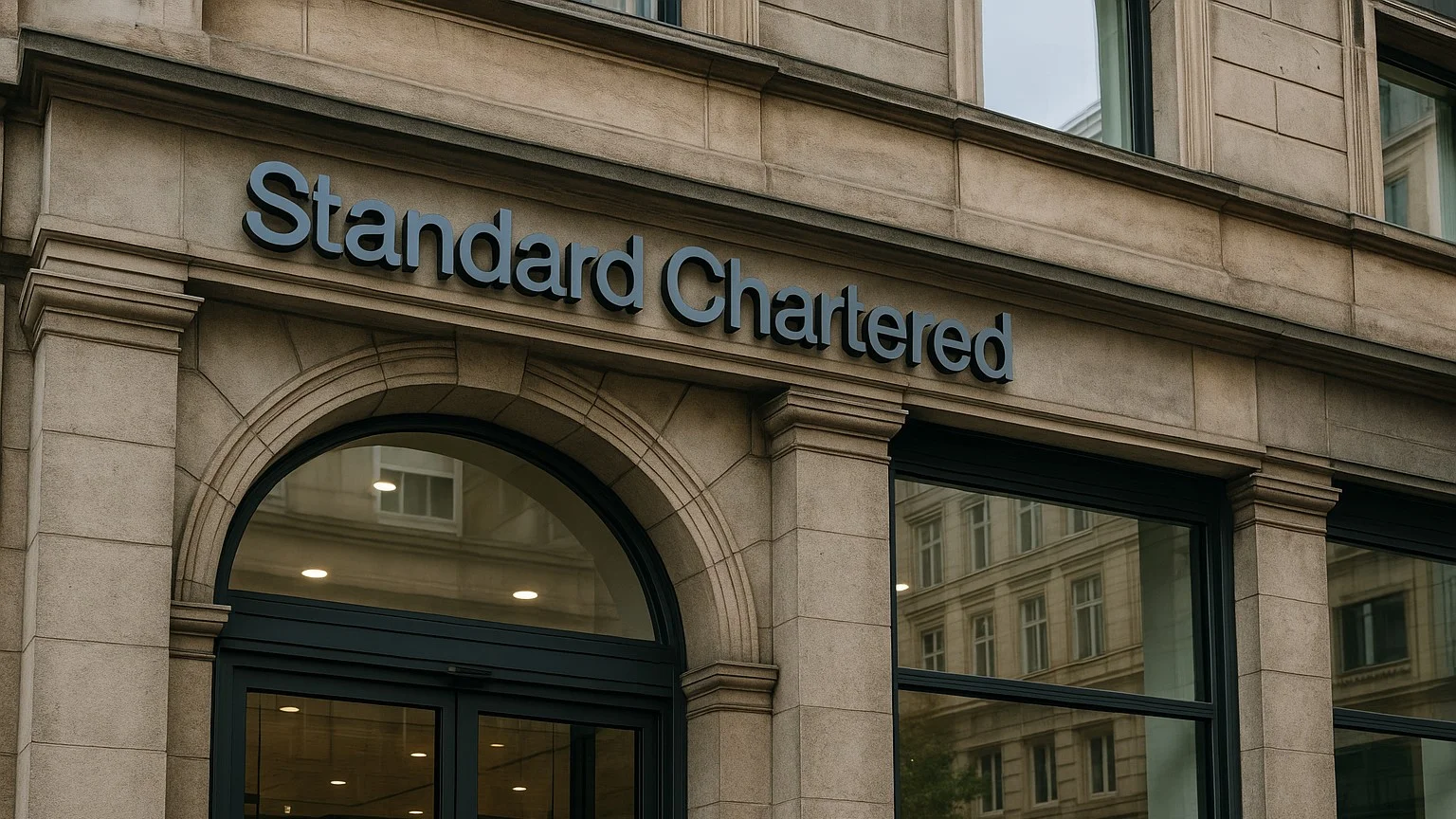
Joint Crypto Statement from the Fed, FDIC, and OCC to Banks
Three major banking regulators in the United States have issued an important statement regarding banks' relationship with crypto assets. The Federal Reserve (Fed), the Office of the Comptroller of the Currency (OCC), and the Federal Deposit Insurance Corporation (FDIC) reiterated that banks must comply with existing laws and risk management principles when custodial crypto assets on behalf of their customers.The statement emphasized that the risks banks may face when offering crypto asset custody services should be carefully evaluated, just as with any other new product or service. The institutions clarified in their statements that this statement does not create any new regulatory expectations. Instead, it aims to remind banks of how existing laws and regulations should apply to crypto asset custody activities.Critical issues banks should be aware of include cybersecurity vulnerabilities, cryptographic key protection, and the management of sensitive data. The agencies' joint statement stated, "A banking institution planning to provide crypto asset custody services should consider the continuous evolution of the crypto asset market and the technology underlying these assets and establish a flexible risk management framework accordingly."Regulators also emphasized that effective anti-money laundering regulations, audit processes, software infrastructure, and governance controls are required to ensure these activities operate within legal frameworks."Crypto Week" has begunThis announcement came as part of the US House of Representatives' "Crypto Week." Various cryptocurrency-related bills are expected to be voted on this week, and comprehensive regulations are expected to take shape. The new legal frameworks aim to establish clearer rules for the cryptocurrency market.Meanwhile, US crypto policies are being reshaped with the change of presidency. The regulatory changes introduced by the Trump administration indicate a significant easing of restrictive regulations implemented during the previous Biden administration. Notable examples of these changes include the OCC's announcement in May that US banks could trade crypto assets for their own accounts, and the FDIC's lifting of the requirement for banks to provide advance notice for crypto activities.The appointment of individuals known to be crypto-friendly to the helm of regulatory bodies is another indicator of this political shift. Jonathan Gould, appointed to the OCC by the Senate last week, previously served as general counsel at Bitfury.The increasing involvement of banking institutions in the crypto space demonstrates the increasingly clear-cut nature of the US's approach to the crypto industry. However, regulators continue to emphasize the need for banks to exercise caution and effectively manage technology-based risks during this process.

LDO Comments and Price Analysis July 14, 2025
LDO/USDT Technical AnalysisLooking at the LDO chart, we see that the price has broken above the narrowing triangle formation at last, and the price jumped above the level of $0.849 without retreating to the previous level. A retest has occurred successfully. Formation Breakdown This level is technically a key area in terms of breakout and horizontal resistance.The first resistance level for the time being is the level of $0.917, and if breached, $0.943 and then the psychological threshold of $1.00 is promising.The level of $0.849 is the first support in case of a pullback, and the levels of $0.785, $0.744, and $0.701 respectively will be other supports if the price goes below $0.849. On the other hand, the price rise is highly possible as it has not pulled back in the triangle formation again.These analyses, not offering any kind of investment advice, focus on support and resistance levels considered to offer trading opportunities in the short and medium term according to the market conditions. However, the user is responsible for their own actions and risk management. Moreover, it is highly recommended to use stop loss (SL) during trades.

Grayscale Takes First Step Towards IPO: Confidential Filing with SEC
Grayscale Investments, one of the cryptocurrency markets' most established digital asset managers, has taken a significant step toward initiating its IPO process. The company announced on Monday, July 15th that it has filed a confidential registration statement with the U.S. Securities and Exchange Commission (SEC). This move joins Grayscale among crypto-focused companies seeking to list on U.S. exchanges.Grayscale files with the SECAccording to the company's statement, the number of shares to be registered as part of the IPO or the price range per share have not yet been finalized. These details will be determined after the SEC's due diligence process is complete and based on market conditions. Grayscale's IPO plan will be launched after receiving regulatory approval and when the market environment is favorable.The confidential filing is made possible by a special provision in U.S. capital markets legislation. This provision allows companies to conduct their pre-IPO processes without public disclosure. The same method has been used previously by Coinbase, Robinhood, and many other technology companies. Circle's success inspiresGrayscale's move signals a renewed IPO momentum in the crypto sector. Indeed, this development follows Circle's initial public offering (IPO) on the New York Stock Exchange (NYSE) last month. Circle, the company behind the USDC stablecoin, launched its shares on the stock exchange under the ticker symbol CRCL on June 5th and quickly saw its share price surge by over 500%.According to Yahoo Finance, Circle's IPO gave the company a valuation of approximately $6.9 billion. This highlighted the significant potential for crypto-focused startups in traditional financial markets.Opening the door to new financing avenuesGrayscale's IPO not only brings prestige but also could open the door to new sources of capital. Among the advantages of being a public company are financial strategies such as selling shares on the stock exchange, issuing convertible bonds, and greater access to institutional investors. For example, MicroStrategy founder Michael Saylor used this strategy to fund his company's Bitcoin acquisitions. Similarly, GameStop attracted attention with its $2.25 billion convertible bond sale in June.Grayscale's move, along with the IPO plans of other major crypto companies like Kraken and Gemini, signals the start of a new IPO season in the sector. After a period of stagnation following the IPO excitement of 2021, markets are reviving as we enter 2025. It's not surprising that crypto companies are turning to Wall Street, especially at a time when regulatory uncertainty is diminishing and investor interest is increasing.
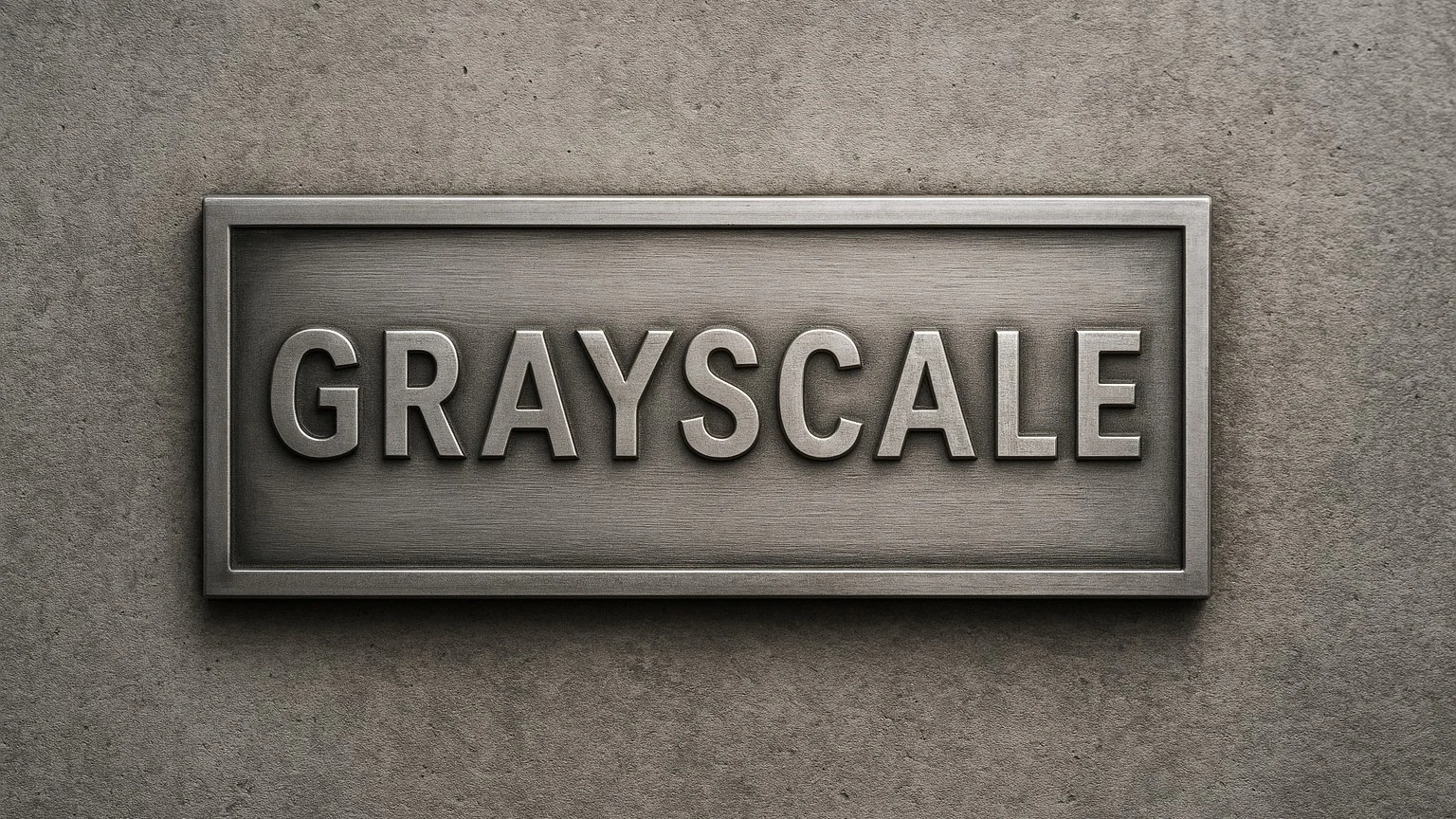
What is Pyth Network (PYTH)?
The field of decentralized finance (DeFi) is opening the door to a whole new world by blending the capabilities of traditional financial systems with the transparency and ease of access offered by blockchain. But at the heart of this transformation lies a crucial issue: the blockchain's ability to connect with external data. This is precisely where oracle systems come into play. Pyth Network stands out with its unique and innovative approach. So, what is Pyth Network? And what is its token, PYTH coin? Let's answer all your questions in this detailed guide.Definition and Origins of the Pyth NetworkFor DeFi ecosystems to function effectively, decentralized oracle systems that can seamlessly transfer dynamic external financial information, such as stock market prices, exchange rates, or commodity data, to the blockchain are necessary. For smart contracts to be functional and reliable, they must securely access this external data. Blockchains are inherently limited to their own internal data; they cannot directly access external data such as prices and interest rates. This demonstrates the need for an interconnectivity to implement complex DeFi solutions, particularly those involving lending, derivatives, or synthetic assets. This is where oracles come into play, bringing this data onto the chain and enabling the automated execution of smart contracts based on real-world conditions. Without this connectivity, DeFi's reach would be significantly limited, making it virtually impossible to offer the same complex products offered by traditional finance. Therefore, oracles are a fundamental building block for the growth and development of the DeFi world.The Pyth Network stands out as a first-party oracle network that receives data directly from powerful industry players such as exchanges, market makers, and financial services firms. Unlike traditional oracle systems, it aggregates data from multiple independent sources rather than a single source. This both enhances security and eliminates the risks associated with data coming from a single source.One of the most striking aspects of Pyth is that it receives data directly from financial institutions. While traditional oracles typically pull information from third parties like CoinMarketCap or CoinGecko, additional layers are added, which can lead to latency or data accuracy issues. Pyth, however, takes the data directly from the source; it comes directly from the markets. This makes the data both faster and much more reliable. Furthermore, the institutions providing the data contribute to the system by risking both their own reputations and the tokens they deposit into the network. This makes data manipulation extremely difficult. This structure is particularly advantageous for applications like high-frequency trading or lending protocols, where even seconds matter.Pyth is a network that directly provides data to over 120 major players, including giants like Jane Street, CBOE, Binance, OKX, and Bybit. This allows applications to directly access highly accurate, low-latency, and detailed data from these institutional sources.Pyth Network History: Key MilestonesDespite its short history, Pyth Network has evolved rapidly and achieved significant milestones in the DeFi world:2021: First integration and data stream launched on Solana: This year, Pyth Network emerged within the Solana ecosystem and began providing its first data streams. Solana's high-performance architecture played a key role in Pyth achieving its goal of providing real-time data. During this period, despite its relatively new nature, Pyth signaled its potential to make a significant difference in the industry by directly receiving data from first-party data providers (exchanges and trading firms). Initially, price data for key crypto pairs such as BTC/USD and ETH/USD began to be provided. This paved the way for DeFi protocols to access more reliable and up-to-date price information.2022: Connecting to other chains via wormholes: In 2022, Pyth Network signaled that it would not be limited to Solana. This year, a critical step was taken to migrate Pyth data to other blockchains: the integration of the Wormhole bridge system. Wormhole is a decentralized platform that enables asset and data transfer between different blockchains. Using this technology, Pyth began migrating its data to Ethereum, BNB Chain, Arbitrum, Avalanche, and many other EVM-compatible chains. This development exponentially expanded Pyth's usability, making it a truly multi-chain oracle solution. DeFi applications across different blockchains could now also benefit from Pyth's reliable and low-latency data. This expansion increased Pyth's overall impact and importance within the ecosystem.2023: PYTH token announced and airdrop completed: Embracing the importance of decentralization and community governance, Pyth Network announced its native cryptocurrency, the PYTH token, in 2023. This announcement was a significant step in the project's decentralization journey. The PYTH token was designed to be used in the governance of the network, giving token holders the right to vote on the future of the protocol. The launch of the PYTH token was supported by a large-scale airdrop process. This airdrop was distributed to early adopters, data providers, and other stakeholders in the ecosystem who contributed to the development of the Pyth Network in various ways. The Pyth airdrop aimed to encourage community participation and make token distribution more decentralized. The launch of the PYTH token allowed the project to adopt a more transparent and community-focused structure.2024: Became one of the largest oracle networks, active on over 40 networks: By 2024, the Pyth Network continued its growth and experienced incredible expansion. Active on over 40 different blockchains at the beginning of the year, Pyth quickly became one of the largest oracle networks. Today, this number has surpassed 100! This success has proven the validity of Pyth's multi-chain strategy. DeFi protocols, NFT platforms, games, and other Web3 applications across various ecosystems have become dependent on Pyth's real-time, reliable price data. This expansion demonstrates that Pyth has moved beyond being a mere oracle and has become a critical component of the entire Web3 data infrastructure. With its diverse data feeds (including stocks, commodities, forex, cryptocurrencies, etc.), Pyth has become one of the most comprehensive financial data providers in the market. This bodes well for the future of PYTH.Why Is the Pyth Network Valuable?We now know what the Pyth Network is, how it emerged, and its place in the oracle world. However, it's worthwhile to elaborate on why this structure is so important, and why it's so highly valued, particularly in Web3 and traditional finance. Today, DeFi applications gain meaning not only with on-chain code but also with real-world data. Many processes, such as the accuracy of real-time price data, rapid liquidations, and the current values of synthetic assets, depend on the health of the oracles running in the background. This is precisely where the Pyth Network stands out: It retrieves data directly from the source, ensures high accuracy without compromising decentralization, and can present this simultaneously across dozens of different chains. Now, let's take a closer look at the details that make Pyth so special.It provides real-time price data (stocks, commodities, forex, cryptocurrencies, etc.)What makes the Pyth Network so special isn't just what it does, but how it does it. One of the greatest needs in the DeFi world is accurate and instant price data. The reliability of this data is fundamental to transaction protocols. Pyth Network isn't limited to cryptocurrencies; it also sources data from traditional markets like stocks, commodities like gold and oil, and foreign exchange rates. This makes it indispensable for many applications, including decentralized exchanges, lending protocols, and synthetic asset platforms. Pyth's low-latency data makes a significant difference, especially in situations where timing is crucial, such as evaluating arbitrage opportunities or ensuring the proper operation of liquidation mechanisms.Provides reliable and low-latency data flow to decentralized applicationsAnother strength of Pyth is that it receives data directly from the source—that is, from actors like exchanges, market makers, or large financial firms. This eliminates the need for additional data aggregators, making data both faster and more reliable. Furthermore, thanks to Pyth's "pull oracle" structure, applications can pull data onto the chain themselves when they need it. This minimizes latency and prevents significant losses. This is one of the most important elements underlying the Pyth oracle's functionality.Off-chain data providers directly participate, increasing accuracyThe Pyth Network has over 100 major data providers. Each one sends its own price information to the network, along with a "confidence interval" indicating how reliable that price is. Pyth then aggregates this data into a single price feed. This way, even if a single source provides inaccurate data, the overall accuracy of the system remains intact. Furthermore, data providers risk losing their staked PYTH tokens if they provide inaccurate information, encouraging them to be more vigilant and honest. Multi-chain oracle solutions offer broad adoption.Running on Solana, Pyth is currently deployed on over 100 blockchains. Its wormhole landscape makes it active on Ethereum, Arbitrum, Optimism, Avalanche, BNB Chain, Polygon, and many more. This makes Pyth a powerful infrastructure for decentralized applications across multiple chains. Number of data feeds, applications, blockchains, and updates supported by Pyth. Source: Pyth.Network Today, Pyth's more than 1,300 price charts can operate with the same quality across more than 100 blockchains. In addition to large networks like Solana and Ethereum, they can also be saved in ecosystems like Optimism, zkSync Era, Base, Aptos, Sui, NEAR, and Cosmos. This broad compatibility offers great freedom for developers. A separate oracle will be registered for each chain, allowing them to move forward with a single solution that operates with the same performance everywhere. For example, one might prefer Solana's members and the other Ethereum's: if Pyth is closed, it provides the same quality data to both, allowing those in between to live.The PYTH token plays a central role in the ecosystem.The PYTH token, the native cryptocurrency of the Pyth Network, plays a crucial role in the network's operation. It provides a voice in governance and influences pricing for data providers. In other words, it's not just a technical detail; it's a unified platform. One of the most fundamental uses of the PYTH token is its management. Token holders can stake their PYTH tokens and become part of the Pyth DAO, voting on decisions that shape its future. These decisions include who will be listed, how prices will be set within the protocol, how much will be paid to data providers, and even approving software updates. In short, PYTH holders directly influence how the protocol operates. A sample PYTH governance panel. Source: Pyth.Network On the Pyth Network, it's crucial for data providers to provide accurate and reliable data. This is achieved through a system called "Oracle Integrity Staking." Data providers stake a certain amount of PYTH tokens to contribute to the network. If someone submits false or manipulated data, a portion of their staked tokens is slashed by the system. This system rewards those who provide accurate information and penalizes malicious behavior. Furthermore, token holders can support data providers they trust by delegating their PYTH, making the network more secure and robust.Pyth's plans include allowing data consumers to pay with PYTH to use oracle services. While not yet active, this is a development that could increase the token's value by providing a new use case.The total supply of PYTH tokens is 10 billion. According to the project's whitepaper, this supply is distributed among various stakeholders in varying proportions:Publishers: 23.29%Ecosystem Growth: 22.92%Protocol Development: 22.75%Private Sale: 16.89%Community and Early Contributors: 14.15%This last portion also includes airdrops to early community members and Pyth contributors. These tokens weren't released all at once. There's a distribution (vesting) plan that gradually unlocks them. The first release took place six months after the token launch. The remaining tokens were or will be released gradually over the 18th, 30th, and 42nd months. This prevents a sudden surge in supply in the market.PYTH's Working PrincipleThe core operation of the Pyth Network is based on an innovative architecture that differs from traditional oracle solutions. This architecture aims to optimize both data quality and cost-effectiveness.The oracle model used by Pyth is one of the most significant differences that distinguishes it from traditional systems. Many oracles use the "push" model. In this system, price data is sent to the chain at regular intervals. Whether the application uses that data or not, on-chain gas fees are paid for each update. Especially if there are hundreds of different price streams and frequent updates, this can be both expensive and unsustainable for the system. Pyth, however, completely reverses this approach and adopts the "pull" model. In this system, data is only called onto the chain when needed. In other words, if a user or application requests price data, it is pulled onto the chain immediately. This way, gas costs are incurred only when needed, eliminating the need for unused data. This solution is both more economical and prevents unnecessary load on the chain.Pyth achieves this through its off-chain service called "Hermes." Hermes stores the most up-to-date price data and activates when the application wants to pull it. This allows applications to first update the data and then execute the transaction logic in a single transaction. This structure is both more efficient and less expensive for the user. On-chain/off-chain architecture of blockchain applications. Source: ResearchGate - Recent Advances of Blockchain and Its Applications Additionally, the "pull" model allows for much more frequent updates than "push" systems. In the Pyth example, this time is only 400 milliseconds! This means instant access to low-latency data. Furthermore, Pyth's architecture performs very well not only on chains with high gas fees like Ethereum, but also on fast chains like Solana. Oracle architecture of Pyth network. Supported blockchains and runtimes: Universal accessOne of Pyth's biggest advantages is its ability to deliver over 1,300 price streams with the same performance across more than 100 blockchains. This means that whether you're running on Solana, EVM-based networks like Ethereum or Arbitrum, or one of the Aptos, Sui, NEAR, or Cosmos ecosystems, Pyth data is available with the same quality everywhere.This allows developers to easily scale their applications to different chains. There's no need to look for Oracle integration to migrate to a new network, as Pyth is already built in. This not only simplifies things but also provides significant time and cost advantages for DeFi projects. For example, a developer might want to leverage the speed of Solana and the security of Ethereum. The consistent and reliable data streams offered by Pyth make these transitions or multi-chain use cases seamless.Pyth's "same performance, every stream" approach both improves the user experience and supports the overall growth of the DeFi world. In this respect, Pyth is becoming not only a data provider but also a strong infrastructure partner for blockchain projects and a tool that simplifies the development process.Who is the Founder of Pyth Network?The team and organization behind Pyth Network are crucial to the project's reliability and robustness. Rather than focusing on a single founder, Pyth was developed through a consortium and an open-source community approach.Pyth Network was initially developed under the leadership of Jump Crypto. Jump Crypto is a research and development firm focused on quantitative trading and infrastructure development with deep experience in both traditional financial markets and the Web3 ecosystem. They played a key role in shaping Pyth's initial vision and establishing its initial infrastructure.The team working on Pyth at Jump Trading was restructured as Douro Labs in July 2023. Douro Labs was founded by Michael Cahill, Jayant Krishnamurthy, and Ciarán Cronin. In addition, the governance of the Pyth Network is handled by the decentralized, autonomous organization called the Pyth DAO. The Pyth DAO provides PYTH token holders with voting rights in governance processes. PYTH token holders can influence the future development of the network by staking their tokens. This means they have the power to vote on matters such as listing new data streams, determining fee structures, setting data provider rewards, and protocol upgrades. This structure transforms Pyth into a community-driven and truly decentralized protocol.The Pyth Network's core infrastructure and codebase are open-source. This means anyone can review, audit, and even contribute to the code on Pyth's GitHub repositories. Thanks to its open-source nature, vulnerabilities can be identified more quickly, and it is continuously improved with innovative ideas from the community. This transparency and community participation are critical to the project's long-term sustainability and security. Frequently Asked Questions (FAQ)Below, we've answered a few frequently asked questions about the Pyth Network (PYTH) and the PYTH coin:What is the Pyth Network and what does it do?: The Pyth Network is an oracle network designed for decentralized finance (DeFi) applications, providing real-time financial market data. Its goal is to provide reliable and accurate price feeds to blockchain-based applications, enabling the development of more complex and secure DeFi products. The network aggregates high-frequency financial data directly from first-party sources and bridges this data to various blockchains.What does the PYTH token do?: The PYTH token is the native governance token of the Pyth Network. Token holders have a say in the decentralized governance of the platform by voting on the future development of the network, fee structures, and other important parameters. Additionally, in some cases, PYTH tokens can be staked by data publishers to provide data of a certain quality.What's the difference between Pyth and Chainlink?: Both Pyth and Chainlink are oracle networks that provide data to blockchains, but their key differences lie in their data sources and architecture. While Chainlink typically uses aggregated data sources to provide a broader range of data, Pyth collects high-frequency data directly from first-party financial institutions (trading firms, exchanges, etc.). This makes Pyth particularly well-suited for real-time, high-precision financial data.Where does Pyth get real-time prices?: The Pyth Network receives real-time price data directly from first-party financial institutions. These data providers include leading trading firms, market makers, and exchanges. This approach aims to increase the accuracy and reliability of data because the data is generated and published directly at the source. Which chains can it be used on?: The Pyth Network is designed for use on a variety of blockchains and layer-2 solutions. Supported chains include Solana, Ethereum, BNB Chain, Avalanche, Polygon, Arbitrum, Optimism, and many other EVM-compatible chains. This broad integration allows Pyth to provide price data in various DeFi ecosystems.How to buy the Pyth token?: The PYTH token can be traded on various centralized and decentralized cryptocurrency exchanges. You can find the PYTH token on major centralized exchanges such as Binance, Kraken, KuCoin, and Bybit, as well as decentralized exchanges like Jupiter (in the Solana ecosystem). To purchase the token, you must first register on one of these exchanges and fund your account.Before investing in real-time and reliable data infrastructures in the Web3 world, discover how the Pyth Network works with the JR Kripto guide.

Nasdaq-Listed Company Launches HYPE Treasury with Hyperliquid
Nasdaq-listed biotechnology firm Sonnet BioTherapeutics has attracted attention by embarking on a new crypto-focused strategy. The company announced its merger with Rorschach I LLC. The resulting entity will operate under the name "Hyperliquid Strategies, Inc." With its treasury of HYPE tokens, it aims to become a strategic player in the crypto world.$888 million valuationAccording to the press release, after the merger, Hyperliquid Strategies will hold 12.6 million HYPE tokens and $305 million in cash reserves. The total value of these assets will be approximately $888 million at closing.This major merger and transformation is being led by Rorschach I LLC, which is backed by prominent investment firms such as Atlas Merchant Capital LLC and its affiliate Paradigm Operations LP. The new company will continue to be publicly listed on Nasdaq as a crypto treasury management firm but will trade under a new ticker symbol.Backing from giants like Paradigm, Galaxy, and PanteraThis move is backed by some of the crypto industry's largest investors. Investors such as Paradigm, Galaxy Digital, Pantera Capital, D1 Capital, Republic Digital, and 683 Capital participated in the merger. Paradigm co-founder Matt Huang said of Hyperliquid:“Hyperliquid is a well-established crypto project with a strong core team, high-quality product development, and rapid growth. We support this treasury strategy because HYPE tokens are difficult to access in the US. We believe this move will significantly contribute to the Hyperliquid ecosystem in the long term.”Goal: Accumulate more HYPEThe $305 million in cash in the new structure will be used directly to purchase more HYPE tokens. This will increase Hyperliquid Strategies' token holdings, and the firm is expected to hold one of the largest strategic reserves for HYPE, the native token of the Hyperliquid protocol.The Hyperliquid protocol generated over $1.5 trillion in perpetual trading volume over the past year. The platform also continued its growth, recently reaching a new high of $11.3 billion in open interest.With the closing, Atlas Merchant Capital founder and CEO Bob Diamond will become Chairman of Hyperliquid Strategies. Atlas founder and investment director David Schamis will assume the new CEO role. Additionally, former Boston Fed President Eric Rosengren and two independent Sonnet board members will join the new board. Diamond commented on the strategy:“Partnering with Sonnet to build a robust crypto treasury management strategy is a great opportunity for us. HYPE and the Hyperliquid protocol offer differentiating factors in the crypto asset world. We believe we will maximize these opportunities with our experienced team of investors and operators.”Sonnet: Transitioning from Biotech to CryptoSonnet BioTherapeutics operates as a cancer-focused biologics developer. With this merger, Sonnet will become a subsidiary of Hyperliquid Strategies. The company will continue to focus on its existing biotech projects and will offer shareholders a contingent value right (CVR), which entitles them to receive payments if these projects generate future revenue.Following the news, Sonnet shares surged significantly on Monday. In pre-market trading, the company's market capitalization surpassed $16 million.

TAO Commentary and Price Analysis July 14, 2025
TAO/USDT Technical Outlook Looking at the daily TAO chart, we clearly see that the falling channel the price has been trading in for a long time has been broken upwards, which might indicate that the price will go up and there is a potential for a rise as long as the channel’s length. The price seems to have found both technical and volume-based support after the breakout.The price of the coin is currently trading at the resistance level of $408 - $420, which was previously tested many times and proved to be a very strong resistance. In case of a pullback, the support levels of $408 → $399 → $375 should be followed. However, if the price continues to climb, the levels of $437 → $489 → $515 could be the targets ahead. Falling Channel Fracture Major Support and Resistance LevelsSupport levels:$408.22 (first support level)$399.21$374.96$352.19Resistance levels:$437.40$489.00$515.67Summary:Descending channel broke out upwardsA huge rise after the breakoutPotential for rise as long as the channel’s length$408 – $420 range is strong resistanceIf the price holds above it, $437 and $489 will be next targets$399 and $375 will work as support in case of a pullbackThese analyses, not offering any kind of investment advice, focus on support and resistance levels considered to offer trading opportunities in the short and medium term according to the market conditions. However, the user is responsible for their own actions and risk management. Moreover, it is highly recommended to use stop loss (SL) during trades.
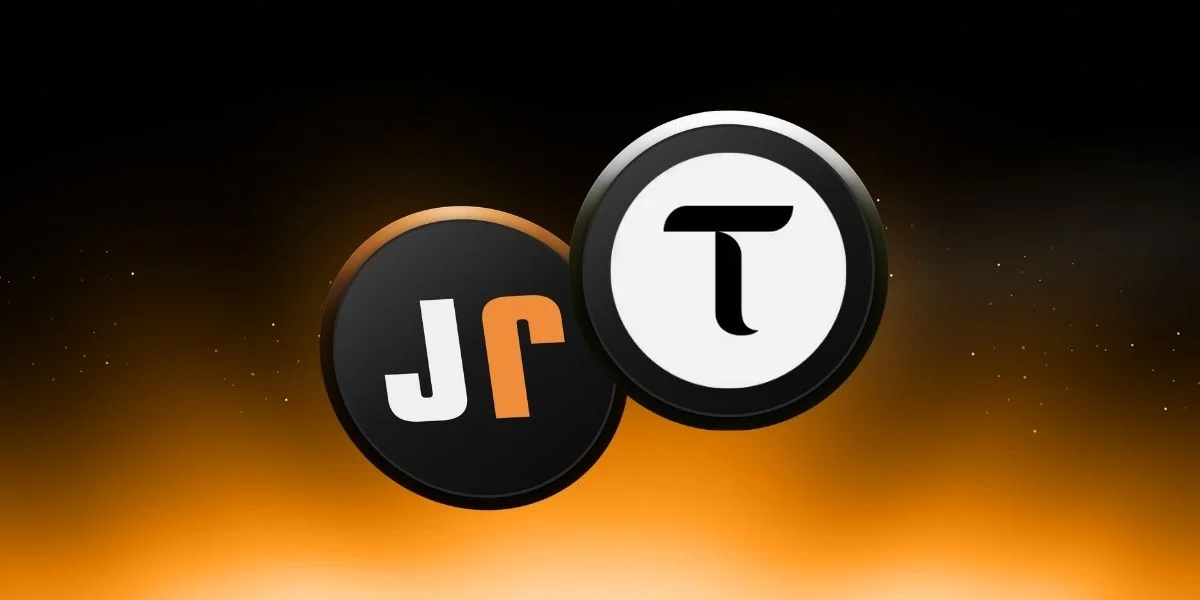
Institutional Investors Exit XRP: Funds Inflow into BTC, ETH, SUI, and LTC
According to a new report from CoinShares dated July 14, crypto asset investment products saw net inflows of $3.7 billion last week. This was the second-largest weekly inflow ever, and the total assets under management (AuM) for crypto assets broke a record, reaching $211 billion for the first time.Strong regional inflows led by the USThe majority of weekly inflows came from the US, with $3.7 billion. Canada and Switzerland contributed more modestly at $17.1 million, and $65.8 million, respectively. However, Germany was notable with an outflow of $85.7 million. Sweden also saw an outflow of $15.7 million. Bitcoin and Ethereum are favored by investorsBitcoin was the most popular crypto asset last week, with $2.7 billion in inflows. This brings Bitcoin's total assets under management to $179.5 billion. This amount corresponds to 54% of the total assets held in gold ETPs and demonstrates the growing interest of institutional investors in Bitcoin.Ethereum also remained on investors' radars. Recording positive flow for the 12th consecutive week, ETH achieved its fourth-highest weekly inflow in history with $990 million. Data from the last 12 weeks indicates that Ethereum received new inflows equal to 19.5% of its total AuM, while this rate remained at 9.8% for Bitcoin.Altcoins are mixed: Solana rises, XRP suffersThe altcoin picture is mixed. Solana was the leading altcoin attracting investor attention with a strong weekly inflow of $92.6 million, while XRP was the biggest loser of the week with a $104 million outflow. XRP's outflow was one of the most notable figures.The situation for other altcoins is as follows:Sui: Notable with a positive flow of $3.5 million. Litecoin and Cardano saw small inflows of $0.5 million and $0.9 million, respectively.Chainlink saw limited outflows of $0.5 million.Short Bitcoin: Interestingly, with inflows of $0.4 million, there was also limited demand for short positions.Multi-asset products experienced a weak inflow of $1.1 million.Other assets: Despite seeing inflows of $2.1 million, they still have over $500 million in outflows since the beginning of the year. iShares and Fidelity Lead Among Fund ProvidersBy provider, iShares ETFs led the way with inflows of $2.43 billion. They were followed by Fidelity Wise Origin Bitcoin F with $400 million and the ARK 21 Shares ETF with $339 million. Meanwhile, Grayscale Investments saw weekly inflows of $143 million, but stood out with outflows exceeding $1.5 billion since the beginning of the year. CoinShares XBT Provider, on the other hand, diverged negatively this week with an outflow of $16 million.

XLM Reviews and Price Analysis July 14, 2025
XLM Technical Analysis: Downtrend BreakoutLooking at Stellar Lumens (XLM) daily chart, it is clearly seen that the long-term downtrend has been broken out upwards. Falling Channel Structure The descending channel pattern obvious on the chart put pressure on the price of the coin for almost eight months, but this channel has been broken above recently thanks to the great trade volume. The breakout of the level of $0.2758, in particular, triggered the rally. The price is currently trading around $0.4731. The strongest resistance ahead is the level of $0.4981, which is also the level of previous peaks. If broken above, the price target could be the level of $0.60 or above in the middle term.On the other hand, the first support the price will meet in case of a possible pullback could be the level of $0.3578. Moreover, $0.3109 - $0.2966, $0.2794 - $0.2610, and $0.24 respectively should be followed in case of deeper corrections.These analyses, not offering any kind of investment advice, focus on support and resistance levels considered to offer trading opportunities in the short and medium term according to the market conditions. However, the user is responsible for their own actions and risk management. Moreover, it is highly recommended to use stop loss (SL) during trades.
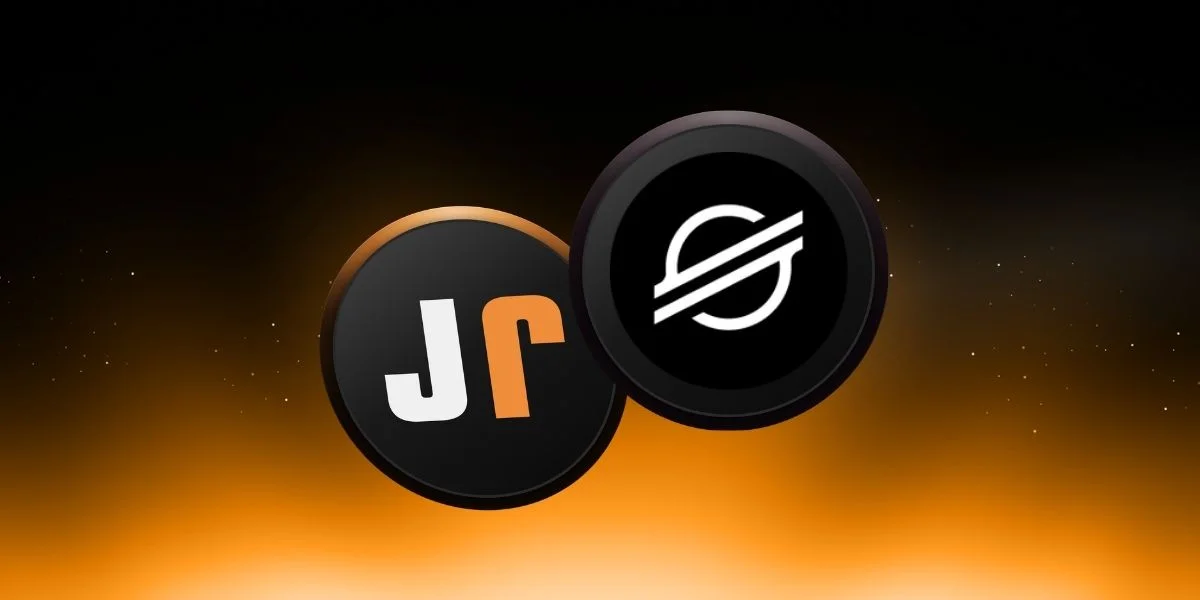
Two Companies Continued to Buy Ethereum and Bitcoin as Prices Rise!
As crypto markets reach all-time highs, large-scale purchases of Ethereum and Bitcoin are attracting attention. Sharplink, a gaming company led by Ethereum co-founder Joseph Lubin, and Japan-based investment firm Metaplanet not only observed this rise but also reinforced their crypto strategies with significant acquisitions.Sharplink Makes Strategic Ethereum PurchaseSharplink Gaming, a company operating in the decentralized finance (DeFi) and gaming software space, added to its Ethereum treasury, purchasing approximately $49 million worth of ETH. According to Arkham Intelligence data, the company transferred 16,374 ETH to its wallet on Sunday afternoon. It was determined that these ETH were recently purchased from Galaxy Digital's over-the-counter (OTC) market. While Sharplink hasn't made an official statement, on-chain analytics platforms like EmberCN suggest the company has reached a total holding of approximately 270,000 ETH. This move comes on the heels of a purchase of 21,487 ETH, or $63.7 million, just days earlier.How did the Ethereum treasury strategy begin?Originally operating as a Minneapolis-based affiliate marketing and iGaming software company, Sharplink launched an Ethereum-centric treasury strategy at the end of May. This strategy was supported by a $425 million private equity sale led by Consensys, a company led by Ethereum co-founder Joseph Lubin. Lubin also serves as Sharplink's chairman of the board.The company positions ETH holdings not only as a financial instrument but also as a means of supporting the long-term strength and decentralization of the Ethereum ecosystem. CEO Rob Phythian clarified this in a statement, saying, "Ethereum is now Sharplink's core treasury asset."Last week, Lubin told CNBC that the company is "buying tens of millions of dollars of ETH every day," emphasizing the continued nature of this strategy. Share price on the riseSBET, the company's Nasdaq-listed stock, closed at $21.65 last week, a 17% increase following the announcement of a previous purchase of 10,000 ETH. This rise was also supported by the fact that ETH reached its highest levels since early February, approaching $2,981 in the market. However, the stock is still 74% below its all-time high of $82. In particular, the false news that Lubin and Consensys had sold shares on June 12 caused a significant collapse in SBET's value.Meanwhile, the Ethereum Foundation is facing investor backlash due to increased sales. Under the new treasury policy announced in June, the annual ETH sales rate was reduced from 15% to 5%. It was also stated that the sales would be conducted with greater transparency and in accordance with "DeFiPunk" principles. Metaplanet Expands Its Bitcoin StrategyWhile these developments are unfolding on the Ethereum front, Japanese investment giant Metaplanet made a major move on the Bitcoin front. The company purchased an additional 800 BTC for approximately $94 million, bringing its total Bitcoin holdings to over 16,000. This latest purchase was made at an average of $117,000 per BTC. The current value of its total BTC holdings is $1.64 billion, and the company's 2025 performance has already yielded a 435% return.Metaplanet, which added 7,400 BTC to its balance sheet in the last month alone, is positioning crypto as a strategic reserve asset, following in the footsteps of institutional players like MicroStrategy. These aggressive purchases reflect the heavy inflows into spot ETFs and institutional interest. In fact, in the last seven days alone, the inflow into spot Bitcoin ETFs has exceeded $2.7 billion. While Metaplanet shares haven't fully reacted to Bitcoin's meteoric rise yet, analysts say the share price has strong upside potential. Its decreasing mNAV (market capitalization/net asset value) makes it attractive to long-term investors.
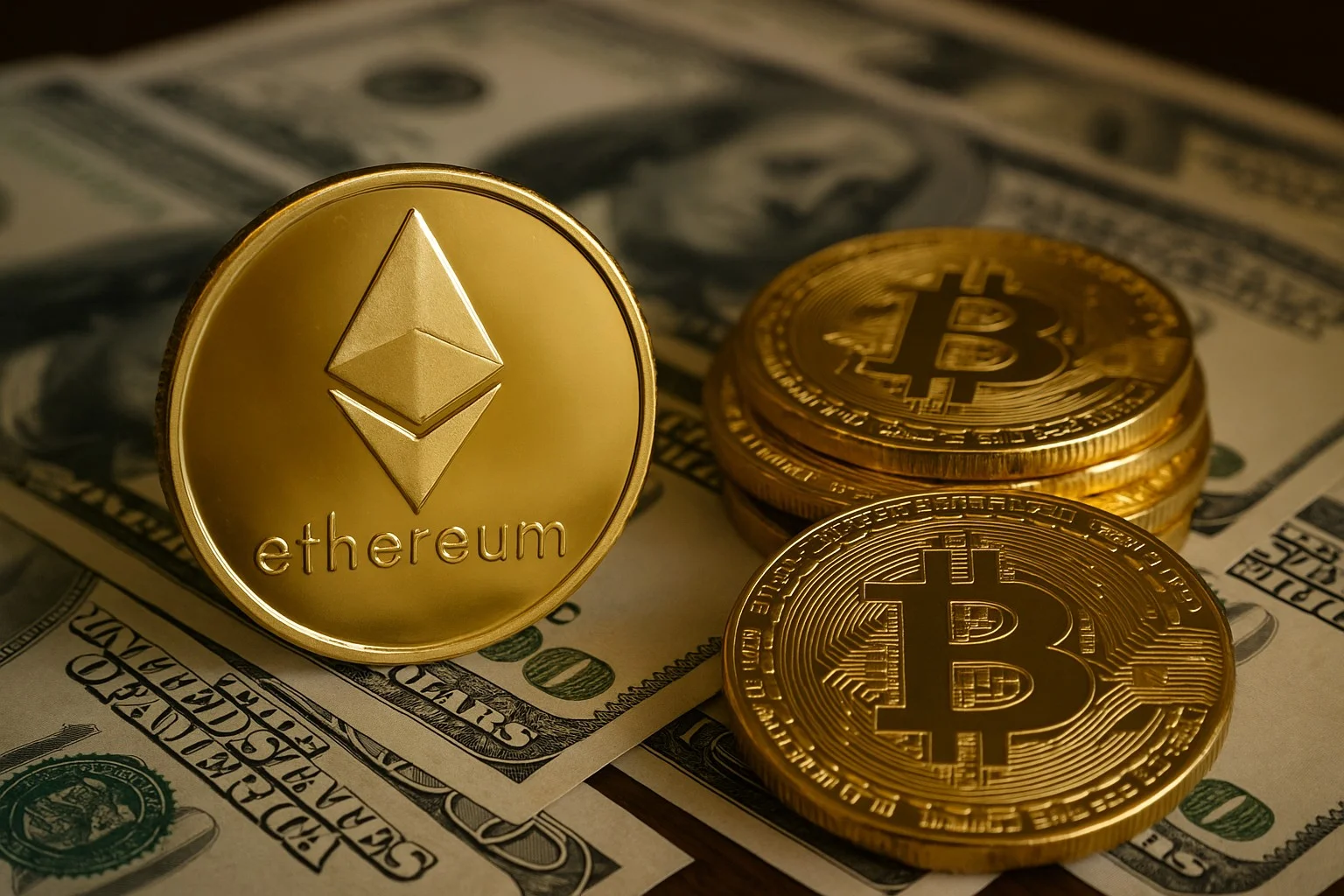
Crypto Week Begins in the US: Bitcoin Surpasses $123,000! Now the World's 5th Most Valuable Asset
A historic turning point is underway in the cryptocurrency markets. Bitcoin (BTC) surpassed $120,000 late Sunday night, reaching an all-time high. Increasing interest from institutional investors and regulatory changes to be addressed during "Crypto Week" in the US are among the key factors driving this surge.Bitcoin Reaches $123,000Bitcoin surged above $120,000 around 11:40 PM Sunday night, boosting the market. As of writing, it is trading at $123,036, a 3.32% increase. The daily inflow of more than $1 billion into Bitcoin ETFs is noteworthy. Currently, more than 6% of Bitcoin's market capitalization is held through ETFs. Furthermore, one of the most significant developments driving this surge is the CLARITY and GENIUS bills, which will be debated in the US Congress as part of "Crypto Week," which begins today. The CLARITY Act aims to clarify the jurisdiction of institutions such as the SEC and CFTC over crypto assets, while the GENIUS Act aims to establish the legal framework for dollar-denominated stablecoins. Furthermore, signals of a potential interest rate cut from the US Federal Reserve are among the other macro factors supporting the rise.Liquidations Break RecordBitcoin's rapid rise has also had a significant impact on futures markets. In the last 24 hours, $680 million worth of positions were liquidated in the crypto market. According to JrKripto data, $614 million of this came from short positions. The largest single liquidation was a $92.5 million BTC short position on the HTX exchange. This wave of liquidations wasn't limited to Bitcoin. Ethereum experienced a $68 million forced closure, XRP a $17 million closure, while altcoins such as XLM, PEPE, DOGE, and SUI also saw heavy trading volume. Bitcoin is now the world's fifth most valuable asset.Bitcoin's market capitalization has surpassed $2.4 trillion, surpassing Amazon, Google, and silver. Currently, only gold, NVIDIA, Microsoft, and Apple have a larger market capitalization than BTC. Vincent Liu of Kronos Research describes this rally as an "infrastructure-driven" rally, adding: "ETFs, policy momentum, and abundant liquidity combined to create this picture."According to Liu, BTC could test the $130,000 to $150,000 range by the end of the year. However, reaching these levels will depend on whether retail investors re-enter the market.Altcoins are also on the riseThe Bitcoin-fueled rally led Ethereum to rise above $3,000, while XRP rose 4.82 percent to $2.91, and Solana rose 3.21 percent to $165.9. According to market analysts, this rally is likely to strengthen further in the coming weeks if ETF inflows continue and crypto-friendly regulations come from the US.
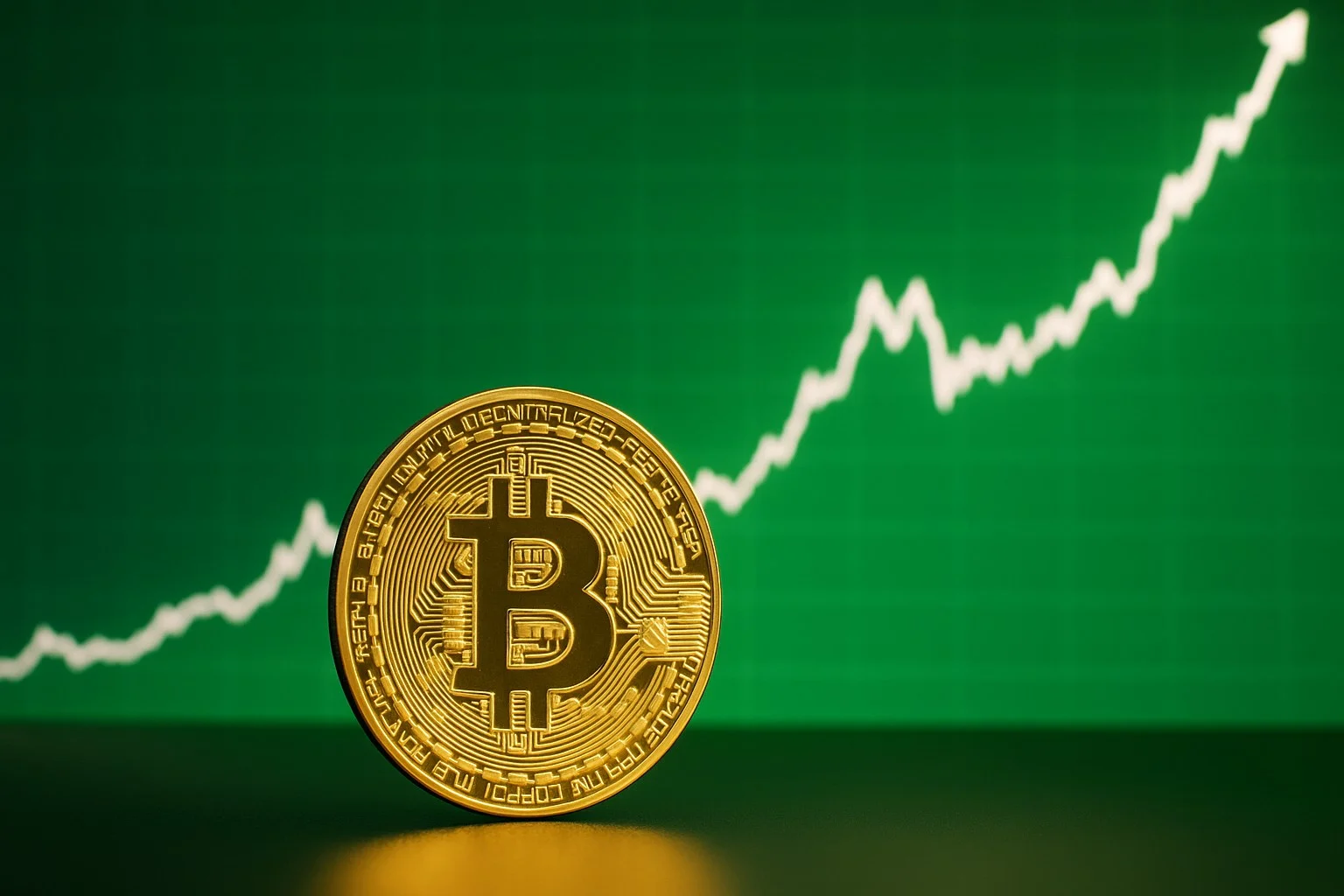
TIA Comments and Price Analysis July 13, 2025
TIA Technical AnalysisTIA is clearly having difficulty breaking the level of $1.88, which is horizontal resistance and the area where previous Fibonacci levels are concentrated. If the price can hold above this key level, the first target will be the range between $2.38 - $2.45, which marks the downtrend line at the same time. In other words, the price will see some pressure here as the horizontal level and the trend will actively work. If the price can hold above $1.88, the way to the higher levels until $2.50 will be open. However, if TIA gets rejected from this level, the range between $1.87 - $1.72 and $1.60 should be followed. Falling Trend Structure Summary:$1.88 seems to be a strong resistance.The first target will be $2.38 - $2.45 if the price can hold above $1.88.The level $1.88 coincides with the trendline.Above $2.45, the next target will be $2.50.If it gets rejected, $1.87, $1.72, and $1.60 should be followed respectively.These analyses, not offering any kind of investment advice, focus on support and resistance levels considered to offer trading opportunities in the short and medium term according to the market conditions. However, the user is responsible for their own actions and risk management. Moreover, it is highly recommended to use stop loss (SL) during trades.

SUI Comments and Price Analysis July 13, 2025
SUI Technical AnalysisLooking at the SUI chart on daily timeframe, we can clearly see that the price has been recovering well since the strong momentum started around the support level of $2.80 - $2.60. Together with this momentum, the price has jumped to $3.50 again. Symmetrical Triangle Formation The price of the coin seems to have been stuck between the ascending trendline and the major resistance pushing from above. This structure has been forming a symmetrical triangle pattern, and we know that such a pattern usually results in a strong breakout.$3.70 - $3.75 price range stands out as the main breakout zone. If the price can hold above this price range, it can first climb up to the range between $4.10 - $4.50 and then to $5.00. This price range is a key area as it will mark the breakout point of the long-term downtrend. In case the price retreats, the first strong support level will be $3.00 - $2.85. If this support breaks down, the price might test $2.24 and the OB (Order Block) below it. This area previously worked as an area where buyers are strong and they pushed the price upwards.These analyses, not offering any kind of investment advice, focus on support and resistance levels considered to offer trading opportunities in the short and medium term according to the market conditions. However, the user is responsible for their own actions and risk management. Moreover, it is highly recommended to use stop loss (SL) during trades.

PEPE Comments and Price Analysis July 13, 2025
PEPE/USDT Technical OutlookThe pattern we have seen in the ADA and DOGE charts we analyzed today also appears in the PEPE chart. The downtrend, which started towards the end of 2024, is still in progress. The price of the coin has tested both the upper border of this descending channel and a key horizontal resistance area at $0.00001238. The price zone of $0.00001051 – $0.00001238 has worked as a strong resistance, which has been tested many times before. If this area gets broken upwards, the levels of $0.00001312 and $0.00001572 could be the next price targets on the chart.$0.00001051 will be the first support the price might test in case of a possible pullback unless the mentioned breakout occurs. The liquidity area of $0.00000892 – $0.00000842 could hold the price if the first support level of $0.00001051 gets broken downwards. The current pattern may signal a trend reversal if it breaks out of the downtrend. Falling Trend Structure Summary:Downtrend starting at the end of 2024 is in progress.The price is both at the upper border of the trend and at horizontal resistance.If the price closes daily above $0.00001238, resistance levels of $0.00001312 and $0.00001572 will be the next targets.In case of a pullback, $0.00001051 and $0.00000892 will be the support levels.These analyses, not offering any kind of investment advice, focus on support and resistance levels considered to offer trading opportunities in the short and medium term according to the market conditions. However, the user is responsible for their own actions and risk management. Moreover, it is highly recommended to use stop loss (SL) during the transactions.
